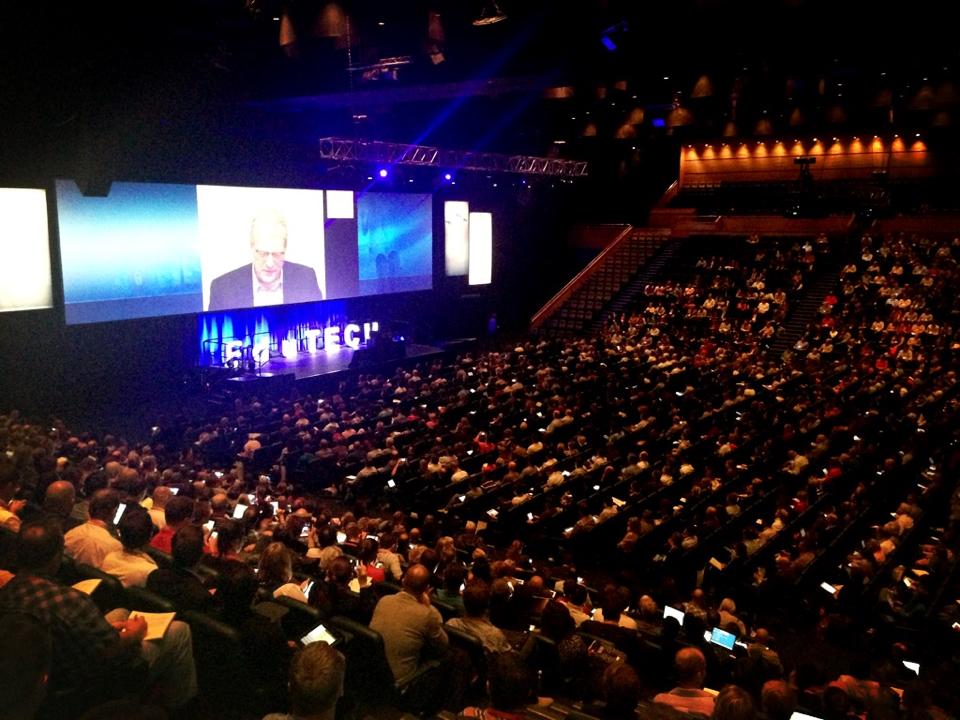Moonshots or Radical Incrementalism
If you do something
remarkable, something new and something important, not everyone will understand
it (at first). Your work is for someone, not everyone.
Unless you're
surrounded only by someones, you will almost certainly encounter everyone. And
when you do, they will jeer.
That's how you'll know
you might be onto something.
Esther Wojcicki, in her book Moonshots
in Education: Launching Blended Learning in the Classroom, suggests
that education is “stuck in the past” and requires a moonshot.
What is a moonshot? Well, Esther and her partners at Google
define it as:
“A moonshot is an ambitious, exploratory and ground-breaking
project undertaken without any expectation of near-term success or benefit and
also, perhaps, without a full investigation of potential risks and
benefits."
The term itself, derives from the ambitious Apollo 11
spaceflight project, and the driven and ambitious vision of John F. Kennedy
to put a man on the moon no matter the barriers.
Wojcicki’s vision is one grounded in using blended learning –
a term for the mixing of traditional and digital learning – to radically change
what education looks like. She advocates student voice and involvement in these
blended environments. Wojcicki’s encourages transformation through the concepts
of TRICK--trust, respect, independence, collaboration and kindness.
Wojcicki’s vision is revolutionary rather than evolutionary.
It assumes that currently there is no trust in education, that there is no
respect for education, that teachers and students have no independence, that
collaboration has been blackballed as cheating. Finally and most strikingly,
she claims that there is no kindness in classrooms.
This is provocative stuff indeed. No wonder it requires a
revolution!
Wojcicki isn’t alone in promoting a revolutionary stance. In
fact, many prominent educational thinkers are saying that the current rate of
change in education is entirely insufficient to deal with the challenges it
faces, and recommend the kind of transcendental paradigm shifts that make
leaders everywhere shiver in their change managements plans.
But is it all gloom, doom, and burning the place down?
Simon
Breakspear defines himself as a learning strategist and researcher. He is
the founder of LearningLabs and a
common figure on the touring circuit of educational. He is, also, one of my
educational heroes – mostly because an egoist like myself appreciates hearing
his own words echoed by the man on the stage.
Breakspear’s thrust is that education needs to become more
agile. What he mean by agile is distilled from the principles of the agile approach
to software programming. The Manifesto for Agile Software Development
changed the approach
to software development, specifically making it more ‘iterative,
incremental and evolutionary’. It is this approach that Breakspear means by the
term ‘agile’.
Becoming agile is the basis the change management that Simon
is talking about for education. To improve on what is already good in our
schools by small and quick iterative steps, otherwise known as radical
incrementalism.
He presents five principles for agile schools: that everyone
is a learner, that radical instrumentalism is the best mode of change, that any
innovation has to matter, that we need to put a human face on change, and we
all need stay nimble and responsive. His catchcry’s include “fail fast” and a
favourite of mine: “the future of education is already here, it’s just unevenly
distributed”. Simon sees educational technology as a conduit for radical
incrementalism. At FutureSchools
he said that schools need to commit to only one thing: getting better all the
time.
It might sound like Breakspear and Wojcicki are saying
different things. But they aren’t. They are saying very similar things about
the need for education to change, the reasons to do so, the resources and means
at our disposal, and they are especially in tune regarding the human elements
of change. The only area they differ is in the mode that that change should occur
– revolution or evolution.
If we accept Wojcicki’s sentiments that there is something wrong
in the state of Denmark, maybe we need a George R. R. Martin
inspired response. If we accept Breakspear’s more optimistic view, we need to
make our schools trust building enterprises because, as Breakspear is at pains
to point out, radical incrementalism is a relational exercise that moves at the speed of trust.
I think I’m more a radical incrementalist than a
revolutionary. Perhaps it is my constructivist upbringing, or my cultural bias
against revolution
All this sounds inspiring to hear, but the realities in our still Tayloristic work
environments and similarly the structures, policies, five year plans, visions
statements, audit and compliance cycles, and everything else which prop up a
organisations do not allow either moonshots or radical incrementalism. Rather,
what more often than not happens is that moonshots and radical incrementalism have
to face off against the four horsemen of organisational change, Kotter’s
Delay, Confusion, Ridicule and Fear-Mongering.
A long time ago, I read the allegory “Who
moved my cheese”. It came out when I was 18, but it took me a while to get
around to reading it. It is a simple allegory for business. It, like Breakspear,
state that change is both the cause and the solution to the difficulties that
organisations and individual’s face. So while Kotter’s horsemen can ride
roughshod over the moonshots and radical incrementalism in many organisations,
it cannot run roughshod over a single unyielding fact. That fact is that change
happens, even if you don’t want it to. Or as Ian Jukes loves to promulgate “Shift
happens!”
Now, has somebody seen my bloody cheese?







.jpg)